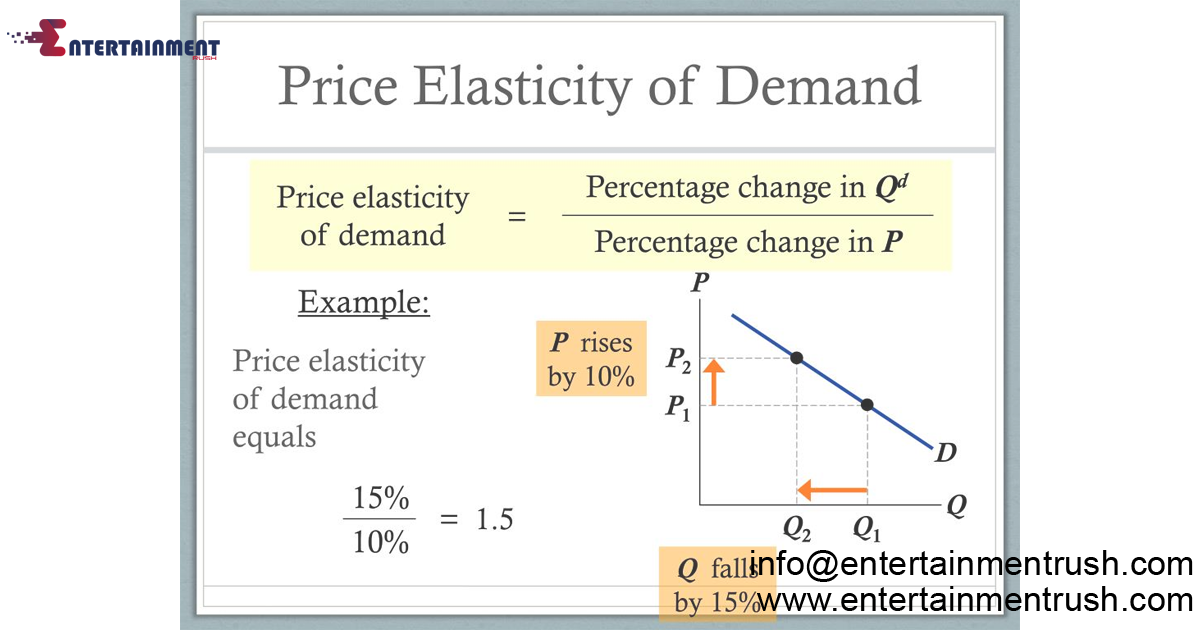Understanding the concept of elasticity of demand is crucial in economics as it sheds light on how consumers respond to changes in price. This concept not only influences pricing strategies for businesses but also plays a significant role in policy-making and market regulation. In the context of the United States, a diverse and dynamic economy, the study of elasticity of demand becomes even more intriguing due to the varied consumer behaviors across different industries and regions. To grasp the essence of the elasticity of demand, it’s essential to delve into its definition and types. The elasticity of demand measures the responsiveness of quantity demanded to changes in price. In simple terms, it gauges how much the demand for a product or service changes when its price changes. This responsiveness can be categorized into three main types: elastic demand, inelastic demand, and unitary elastic demand.
Elastic Demand
When demand for a product is elastic, it means that consumers are highly sensitive to price changes. In this scenario, a small change in price leads to a proportionally larger change in quantity demanded. Elasticity values greater than 1 signify elastic demand. For example, luxury goods like designer clothing often exhibit elastic demand because consumers can easily defer purchases or switch to cheaper alternatives if prices rise.
Inelastic Demand
Conversely, inelastic demand describes a situation where consumers are relatively insensitive to price changes. Here, changes in price result in a less-than-proportional change in quantity demanded. Elasticity values less than 1 indicate inelastic demand. Basic necessities like food and medicine typically display inelastic demand because consumers will continue to buy these items regardless of price fluctuations.
Unitary Elastic Demand
Unitary elastic demand occurs when the percentage change in quantity demanded is exactly equal to the percentage change in price. In this scenario, the elasticity value is equal to 1, signifying a proportional response in demand to price changes. Unitary elastic demand is relatively rare but can be observed in certain markets for goods like gasoline. Now, let’s apply these concepts to understand the elasticity of demand in the United States across various sectors and industries. The U.S. economy is known for its complexity and diversity, with a wide range of consumer preferences and market behaviors. Therefore, examining elasticity within this context provides valuable insights into consumer decision-making and market dynamics.
Elasticity in Consumer Goods
In the realm of consumer goods, the elasticity of demand varies significantly depending on the nature of the product. For instance, consider the market for smartphones. While the demand for high-end smartphones may be relatively elastic due to the availability of cheaper alternatives and rapidly evolving technology, the demand for basic smartphones might be more inelastic because they are considered essential for communication and daily activities.
Similarly, the elasticity of demand for fast food can differ based on consumer preferences and market saturation. In regions with abundant fast-food options, consumers may exhibit more elastic demand, readily switching between restaurants based on price and promotions. In contrast, areas with limited choices or specific brand loyalties may experience more inelastic demand for certain fast-food chains.
Elasticity in Healthcare
The healthcare sector provides another fascinating case study of the elasticity of demand in the United States. Medical services and prescription drugs often demonstrate inelastic demand due to their necessity for maintaining health and well-being. Patients typically cannot easily substitute these services or medications based on price alone, leading to a lower responsiveness to price changes. certain elective medical procedures or cosmetic treatments might exhibit more elastic demand, especially if consumers perceive them as discretionary expenses. In recent years, the rise of telemedicine and generic drug options has introduced new dynamics into the healthcare market, potentially affecting the elasticity of demand for certain medical services and medications.
Elasticity in Energy
The energy sector is another area where understanding the elasticity of demand is crucial for policy-making and market regulation. Gasoline, for example, often displays inelastic demand in the short term, as consumers need fuel for commuting and daily activities. However, over the long term, consumers may adjust their behavior in response to sustained price changes, such as by carpooling, using public transportation, or purchasing more fuel-efficient vehicles.
Electricity demand also showcases interesting elasticity patterns, with variations across residential, commercial, and industrial sectors. In regions with deregulated energy markets, consumers may have more options to respond to price fluctuations, potentially making electricity demand more elastic compared to areas with regulated monopolies.
Implications for Business Strategy
For businesses operating in the United States, a nuanced understanding of elasticity of demand is essential for devising effective pricing strategies and optimizing revenue. Products with elastic demand require careful pricing strategies to balance profitability with market share, whereas goods with inelastic demand may allow for more flexibility in pricing. businesses can leverage elasticity insights to identify opportunities for product differentiation, targeted marketing, and innovation. By understanding the factors influencing consumer responsiveness to price changes, companies can tailor their offerings and promotional activities to maximize competitiveness and customer satisfaction.
Policy Consideration
In addition to its implications for businesses, the elasticity of demand also informs public policy decisions related to taxation, subsidies, and regulation. For instance, policymakers may use elasticity estimates to predict the impact of changes in sales taxes or excise duties on consumer behavior and government revenue. understanding elasticity can guide policymakers in designing effective interventions to address market inefficiencies or externalities. By considering the responsiveness of demand to price changes, policymakers can implement targeted policies to promote economic efficiency and social welfare. exploring the elasticity of demand in the United States unveils a complex interplay of consumer behaviors, market dynamics, and policy implications. From consumer goods to healthcare and energy, elasticity influences various sectors of the economy, shaping business strategies and policy frameworks. As the U.S. economy continues to evolve, studying elasticity remains instrumental in adapting to changing consumer preferences, technological advancements, and regulatory landscapes. By embracing the principles of elasticity, businesses and policymakers can navigate market uncertainties and drive sustainable growth in an increasingly interconnected global economy.
